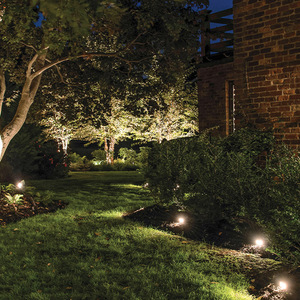I am building a new home with two bathrooms that are back-to-back to each other. I was wondering what are my best best options in exhausting the bathroom fans to the outside? Can I Y them together and make one run outside through the attic? Should I make two separate exhaust runs? I am on the gable end side on the house, would it be best to go through the gable end in the attic to the outside or run them to the eve soffit? Thanks!
Discussion Forum
Discussion Forum
Up Next
Video Shorts
Featured Story

Listeners write in about fire-rated doors, using seven minisplits for cooling, and how to build a second-story addition.
Featured Video
SawStop's Portable Tablesaw is Bigger and Better Than BeforeHighlights
"I have learned so much thanks to the searchable articles on the FHB website. I can confidently say that I expect to be a life-long subscriber." - M.K.
Fine Homebuilding Magazine
- Home Group
- Antique Trader
- Arts & Crafts Homes
- Bank Note Reporter
- Cabin Life
- Cuisine at Home
- Fine Gardening
- Fine Woodworking
- Green Building Advisor
- Garden Gate
- Horticulture
- Keep Craft Alive
- Log Home Living
- Military Trader/Vehicles
- Numismatic News
- Numismaster
- Old Cars Weekly
- Old House Journal
- Period Homes
- Popular Woodworking
- Script
- ShopNotes
- Sports Collectors Digest
- Threads
- Timber Home Living
- Traditional Building
- Woodsmith
- World Coin News
- Writer's Digest


















Replies
sometimes other variables affect this choice, but in general my first choice would be a gable end if it is downwind side of house.
Roof is fine too with a good cap and damper flap.
Under the soffit is the worst choice because the moisture you vent OUT of the house there can be drawn right back into the attic through the soffit vents.
Fantech and panasonic both have good quiet remote fan systems where you can use one fan and junction the runs together.
Welcome to the
Taunton University of Knowledge FHB Campus at Breaktime.
where ...
Excellence is its own reward!
I would recommend seperate fans for each bathroom (often fan/light combinations work best). Wyeing them together risks backdrafting from the one that's running to the one that's not. Using a central/remote fan, like a Fantech, on a branched duct will pull air out of both baths when only one is being used and would have to be sized large enough for both, drawing more air than necessary when only one is in use.
Venting out a sidewall is always preferable, with a slight down-pitch to the duct to allow condensation to drain out rather than back in.
Agreed: do not vent through a soffit if there's soffit intake vents.
And switch the fans with short-term timers so that they can continue to run after you leave the bathroom for more complete removal of moisture.
The Panasonic Whisper series of fans are among the most efficient and quietest, and I like the Leviton electronic timer: http://www.energyfederation.org/consumer/default.php/cPath/39_766_128
Solar & Super-Insulated Healthy Homes
Edited 1/1/2009 10:25 pm ET by Riversong
Hey you brought up some really good points regarding only using one fan for both bathrooms.I use the fantech fans and usually hook up two bathrooms to one fan. I don't think you would get backdrafting by using the y, as the fan is pulling air out of both spaces.The waste of pulling condition air out of the house is magnified when using a one fan, two bath set up. I guess long term, it kinda makes sense to have a properly sized fan for each bathroom. I am not sure I could the sell my clients on this though."Properly sized" means that when you turn the fan on you are sucked up into the register.
I don't think you would get backdrafting by using the y, as the fan is pulling air out of both spaces.
I was referring to wyeing two ceiling fans to one outlet.
Riversong HouseWright
Design * * Build * * Renovate * * ConsultSolar & Super-Insulated Healthy Homes
Since you're building new, I would go with two exhaust lines thru the gable end. A roof jack might be shorter, but I really try to avoid roof penetrations unless they're unavoidable.
You can "Y" two lines together without getting backflow as long as the "Y" is at the exhaust flapper
You can "Y" two lines together without getting backflow as long as the "Y" is at the exhaust flapper
But then you've got a restriction at the wall cap if both fans are running, reducing the CFM from each.
Riversong HouseWright
Design * * Build * * Renovate * * ConsultSolar & Super-Insulated Healthy Homes
Yes, you'll see some reduction in flow, but not a backflow.I'm sure that I didn't invent it, but I tried this when I remodeled my bathrooms several years ago. With two daughters still at home and a working wife, both bathrooms were in use every morning and we never had any problems.Several years ago, a customer was having backflow issues and I found that the fans had been tied together with a "T" with ~4' of flex duct between the "T" and the flapper. Two new pieces of flex and a "Y" at the flapper made him a happy camper. - lol
In my jointed systems, they Y together first, then the remote fan, then the single run out.
Welcome to the Taunton University of Knowledge FHB Campus at Breaktime. where ... Excellence is its own reward!
That's how I would do a remote fan setup too, but my installations have all been individual fan/light units which I bring into a "Y" attached to the flapper that goes thru the gable end wall.
A few things to add... First, use hard ducting and insulate it. The flex duct can deteriorate over time and it can be crushed or pinched by other installs in the attic, or by workers later. The insulation helps to keep condensation from forming on the pipe since the air inside the pipe (when it is being used) will be a different temperature than the air outside of the pipe for a large part of the year - depending on where you live.
The US EPA recommends a minimum of 50 net CFM for a smallish bath so the minimum fan size ends up being around 80 CFM, which would probably be a 4" fan.
My vote would be for 2 separate fans as otherwise you will probably be exhausting air out of an unused bath every time the single fan is used. Also, you have to consider the CFM thing.
If one bath is a master bath with a separate toilet room, that bath needs 2 exhaust fans - or at least it is required by our mechanical code assuming neither room has an operable window. Your mileage may vary. Maybe this would be your application for the "Y" duct and a single fan?